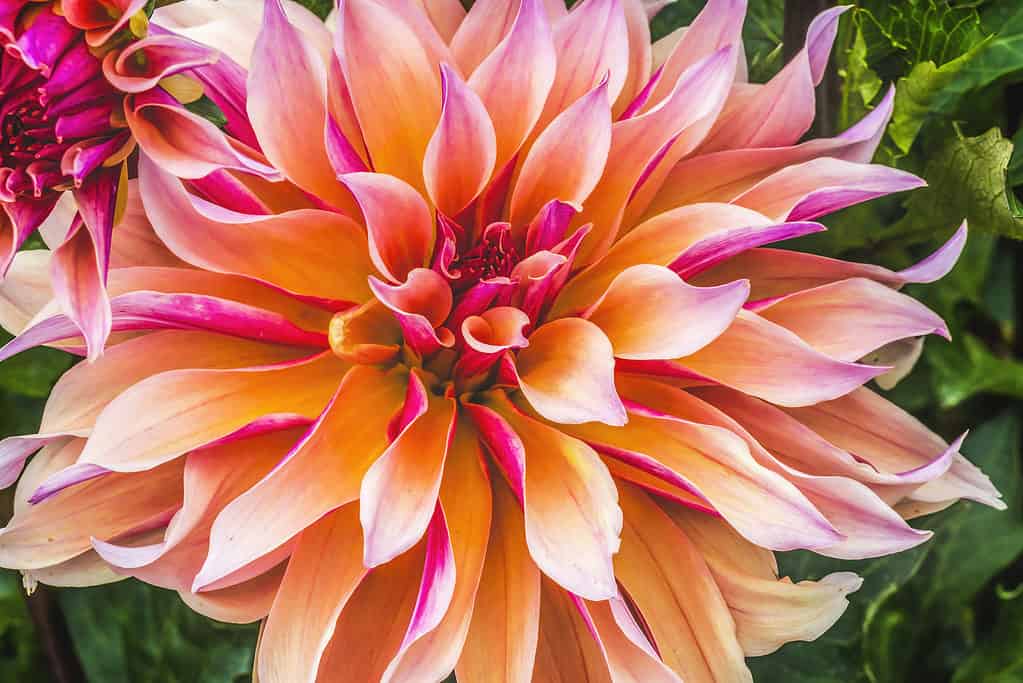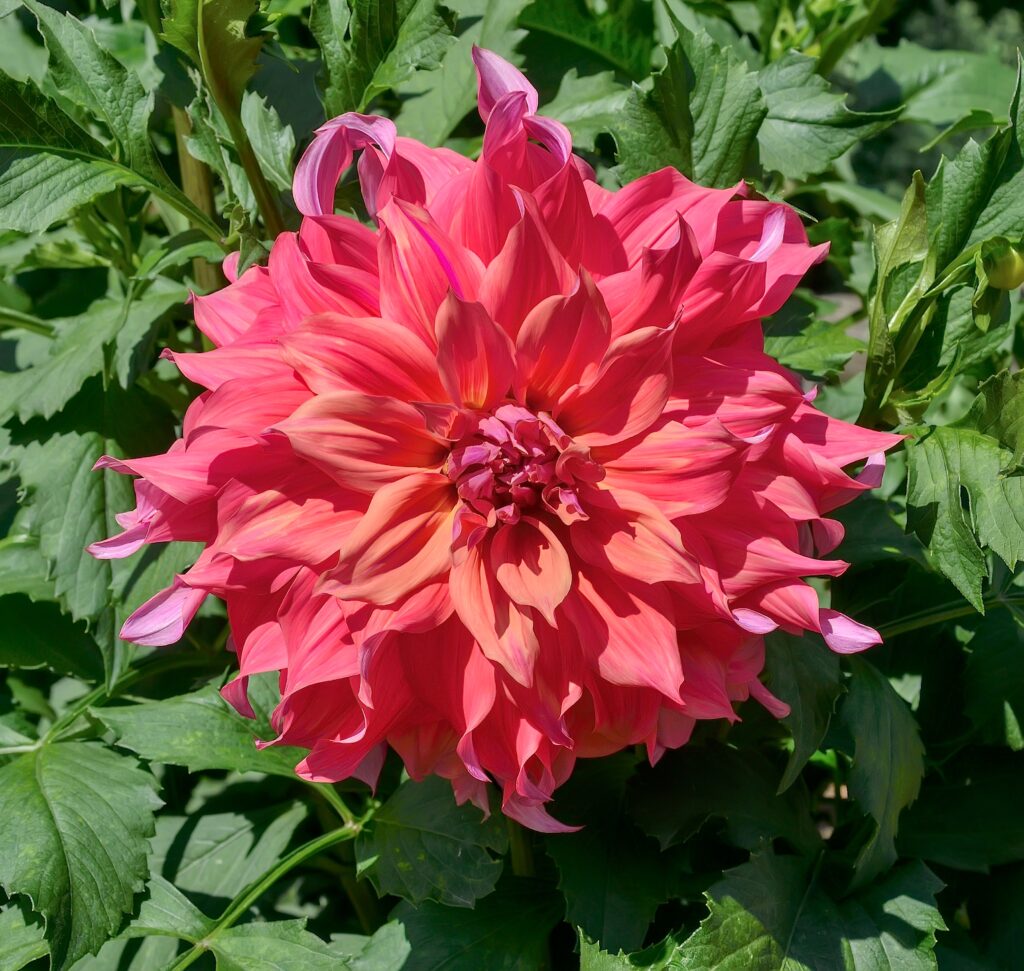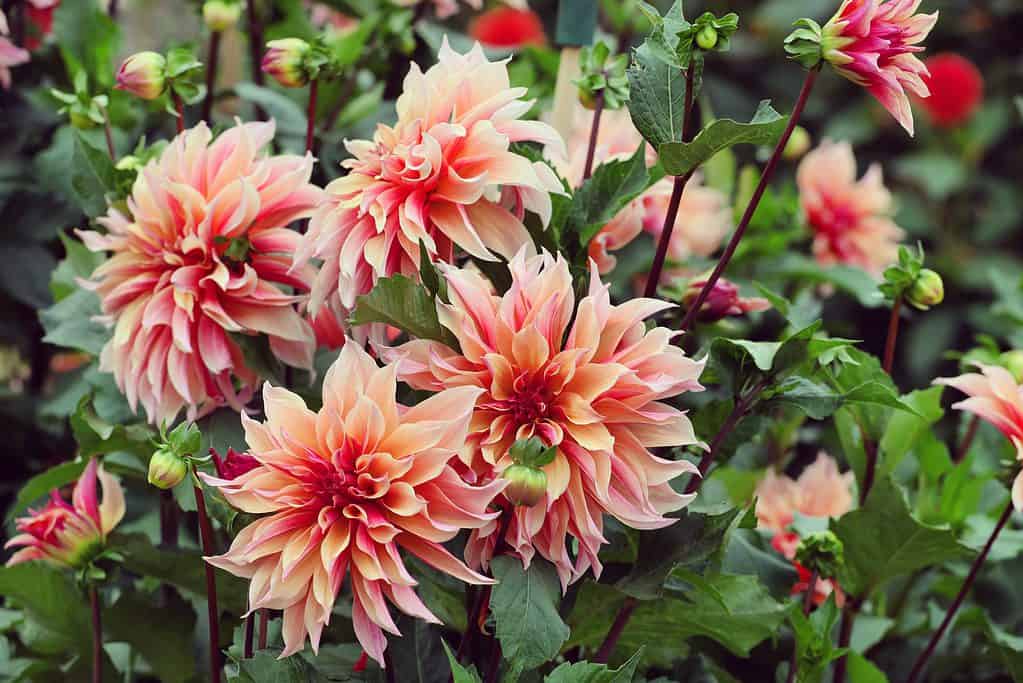Mexico is a country that is in the southern part of North America and is considered part of Latin America. This country is the third biggest in Latin America, being smaller than Argentina and Brazil, and is directly south of the United States and north of Belize and Guatemala. To Mexico’s west is the Pacific Ocean and to the east is the Gulf of Mexico, with the southeast bordered by the Caribbean Sea. This country has a rich cultural history dating back to the ancient Mesoamerican people who inhabited Mexico, the Aztecs. This history informs many aspects of the country even into the modern day. This history has even influenced the choice of the national flower of Mexico: the dahlia.
About Mexico

Mexico is the third largest country in Latin America.
©Saurabh797/Shutterstock.com
Mexico is a unique country with vast natural resources, social and geographic diversity, thriving urban centers, and unique geography. Among its geographic features are miles of coastal beaches, islands and archipelagos, volcanoes, farmland, highlands, and dry desert. This land of contrasts and extremes has tall mountains, large deserts, and thick rainforests. Mexico is in a geologic area known as the Ring of Fire, which means that it is the site of significant seismic activity (earthquakes) and is home to major volcanoes. As a result, Mexico has seen some of the most significant volcanic eruptions in recent years. Throughout history, these volcanic eruptions have shaped the terrain of Mexico and impacted local ecosystems.
Today, Mexico has incredible biodiversity, with many unique plant and animal species found living in its temperate forests, grasslands, swamps, coral reefs, arid deserts, and tropical rainforests. Not only does Mexico have some of the world’s greatest diversity in mammal species and reptile species, but you can also find thousands of tropical plant species and insects thriving in parts of the country. In fact, Mexico is one of the top countries for a variety of butterfly and fern species!
Mexico’s diverse ecosystems contain great biodiversity, with different ecological zones throughout the country providing a home in which thousands of different plant and animal species thrive. Among these is the national flower of Mexico: the dahlia. Dahlia is actually a genus of Herbaceous, perennial plants known collectively as “dahlias,” which are native to Mexico and neighboring countries in Central America. This article will explore more details of dahlias now!
What is the Dahlia, Mexico’s National Flower?
The national flower of Mexico, the dahlia, is actually the scientific name for a group of plant species in the genus Dahlia and the family Asteraceae. There are dozens of different dahlia species, with many different hybrid varieties commonly grown in flower gardens. Dahlias are native to Mexico and nearby parts of Central America but have gained popularity for cultivation in many different parts of the world. Because dahlias come in a wide range of shapes, sizes, and colors, these flowers are immensely popular for gardens, bouquets, floral arrangements, and even floral competitions.
Dahlias are unique in that they grow from tubers. Tubers are underground organs that provide plants with nutrients. Like other tubers, such as potatoes, dahlia tubers have historically been eaten and considered to be edible. Those who profess the value of eating dahlia tubers eat them raw or cooked, though the skin on the outside of the dahlia tuber is usually considered unpleasant to eat. They do not have a strong taste, but this flavor can develop more over time when the dahlias are stored. The dahlia grows well in most garden soils and is a popular choice among gardeners across North America and Europe.
What Do Dahlias Look Like?

The dahlia grows in a “dinner plate” style, reaching up to 14 inches in diameter.
©iStock.com/bpperry
Dahlias are Herbaceous perennial plants with 42 accepted species and many different varieties (coming in the hundreds or thousands). Their leaves are green and segmented and toothed.
Most of the time, dahlias are organized by type into 10 major categories. If you see a dahlia growing, you may find the blossoms in a rainbow of colors, including red, orange, yellow, pink, purple, or white. Dahlias also come in very different sizes, with smaller dahlias growing only 1 or 2 inches across and larger dahlias, such as the dinner plate type, reaching up to 14 inches across! The dahlias that most gardeners cultivate are hybrid varieties planted as tuberous roots.
Where Do Dahlias Grow?
The flowers in the Dahlia genus are from Mexico and nearby countries such as Costa Rica, Guatemala, Honduras, and Nicaragua. However, dahlia plants were brought from Mexico to Spain during the 1700s. That is when the genus was named “dahlia” in honor of the scientist Andreas Dahl.
The highland and mountainous parts of Mexico are where some of the original dahlias originate from, where they were originally cultivated both for their beauty and their practical use as a source of medicine and food. In general, dahlias do not thrive in extremely hot climates. They do grow well in moderate climates with lots of sun and fair-to-high levels of humidity.
Today, there are several major types of dahlias, each of which has a unique appearance. For example, you can find dahlias that are single-flowering (such as the orchid, anemone, and collarette types), but you can also find the kind that are double-flowering (cactus, semi-cactus, formal decorative, informal decorative, balls, and pompons). The species Dahlia pinnata, Dahlia rosea, and Dahlia coccinea were among the first species introduced to Europe for cultivation, and these became popular during the 1800s among European gardeners.
Dahlias bloom in the late or mid-summer and are late-season flowers that maintain their bright colors throughout the end of summer and into the fall. Dahlia species are Herbaceous perennials. However, especially when they are exported to cold climates, dahlias can be grown as annuals. This allows gardeners to keep the dahlia tubers inside during a cold winter and then replant them in the spring. In warmer conditions, gardeners can keep the dahlia tubers outside in the soil all year round, allowing them to blossom again naturally in the next growing season.
Dahlias grow particularly well in USDA Hardiness Zones 6 or 7.
What is the Cultural Significance of Dahlias in Mexico?

The original name of the dahlia flower is “
acocoxochitl.”
©Olga Vasilek/Shutterstock.com
As the national flower of Mexico, the dahlia also represents the long, storied history of the country and the broader region. The original name for the dahlia is from the Nahuatl language. In that language, they are called “acocoxochitl,” which comes from the words “a-ti” for water, “coco-tli” for tube, and “xochitl” for flower.
Ancient Uses for the Dahlia
Historians can trace the cultivation and cultural significance of the dahlia back hundreds, and even thousands of years. In ancient times, in the southern part of the land now known as Mexico, the Xochimilca people were a complex agricultural society. They grew vegetables and other food crops, as well as gardens of bright flowers. Their flower gardens included wildflowers, marigolds, and large and vibrant dahlias in a spectrum of colors. Eventually, this ancient civilization was conquered by an even more famous civilization: the Aztecs.
Even during this period, dahlias appeared in national symbols and cultural artifacts to represent the Aztec people. They were used in religious ceremonies. Additionally, traditional healers made them into medicine to treat a variety of physical ailments. The Aztecs also ate the dahlia tubers as food.
Ancient Beliefs About the Dahlia
Within the ancient Aztec culture, the dahlia was called a flower of war. In their traditional religious practices, the dahlia was associated with a goddess known as the “snake woman” or “earth goddess.” She was commanded by other deities to stab a dahlia with an agave leaf. She then held the flower to her heart all night long. The following morning, this goddess gave birth to a full-grown god with a thirst for war and blood. That story is one reason why the emblem of a dahlia could be found on the helmets of warriors.
The Aztecs had advanced farming techniques and prized the beautiful dahlia blossoms. Legends say that dahlias were a prized bloom grown in the gardens of the Aztec emperor and other wealthy landowners. Dahlias became known as the “god of flowers.” Said to have both sacred and practical uses for medicine and food, the Aztec people cultivated new varieties of dahlias. They grew these in gardens. The flowers also grew abundantly as wildflowers in the mountains.
Modern Uses for the Dahlia
Eventually, with Spanish colonization, seeds from dahlias were sent back to Europe to be cultivated. Scientists created new dahlia variations and new crossbreeds emerged in a wide range of colors, sizes, and shapes. However, in what is now modern-day Mexico, the dahlia has retained a place of respect. It still symbolizes heritage and culture but also represents unity, beauty, and national pride. As a result, even today dahlias can be found in Mexican folk art, fine art, textiles, clothing, and murals.
In recognition of the dahlia’s special place in Mexican culture and history, the government declared the dahlia to be the national flower of Mexico in 1963.
Where Does the Dahlia Appear in Mexican Culture?
Dating back to ancient times, flowers have had a central and essential role in Mexican culture. Around holidays, you can find locally-grown flowers decorating homes. The most popular flowers grow in home gardens, churches, cemeteries, parks, and in the wild. Some of these flowers have particular meanings and associations with ancient Aztec gods. Among these are the three most popular and recognizable Mexican flowers: the poinsettia, the yucca flower, and the dahlia. Each of these appears at certain times of the year and is associated with holidays such as Christmas and street celebrations for festivals like the Day of the Dead and the Feast of Xochiquetzal.
As the national flower of Mexico, the dahlia adorns various government buildings and items of cultural significance. Dahlias are often planted at homes, outside markets, near public buildings, and near parks. You can also find them in many schools and universities, as well as government buildings. There, the dahlia appears as a decorative motif in architecture, paintings, and other decorations.
If you visit Mexico, look out for dahlias! Since this plant blossoms at the end of the summer and into the fall, you can see it growing for several months. This includes during some notable Mexican holidays, where celebratory dahlias will add to the festive atmosphere.

Dahlia flowers are widely represented throughout the country of Mexico.
©2052076004/Shutterstock.com
What Are the Other National Symbols of Mexico?
As the national flower of Mexico, the dahlia is just one symbol of this beautiful and geographically diverse country. Some of the other emblems of Mexico include:
- The national flag of Mexico consists of three vertical bands green, white, and red. The national emblem of an eagle is at the center.
- The national animal is the golden eagle, which can be found in many of Mexico’s national symbols (such as the flag and the coat of arms).
Mexico is a country of unique culinary traditions, incredibly diverse geography, rich culture and history, and immense biodiversity. Among its vast array of plant species are many beautiful flowers like the dahlia. If you visit Mexico, look out for the many different colors and types of dahlia, and remember its long cultural legacy. This article is just a brief introduction to this national flower of Mexico. There is much more you can learn! Why not try even growing a dahlia in your home garden?
The photo featured at the top of this post is © Wiert nieuman/Shutterstock.com
Thank you for reading! Have some feedback for us? Contact the AZ Animals editorial team.






